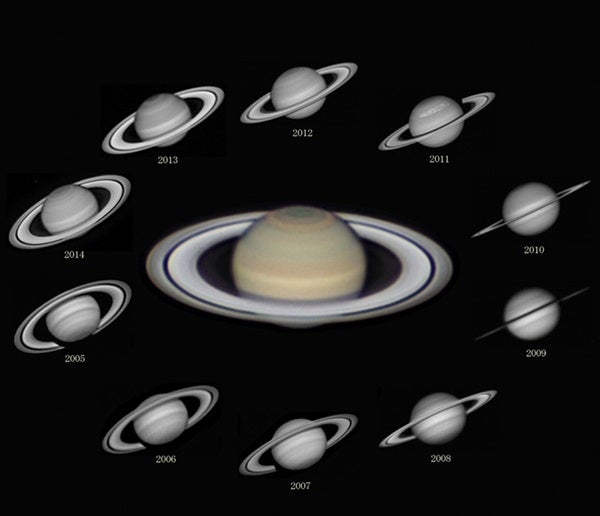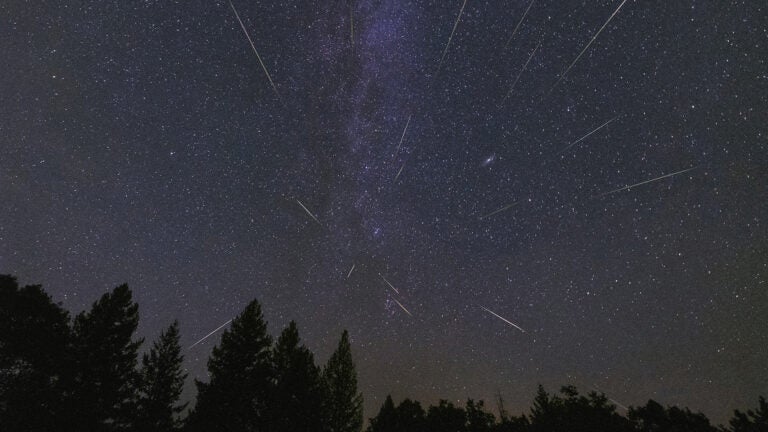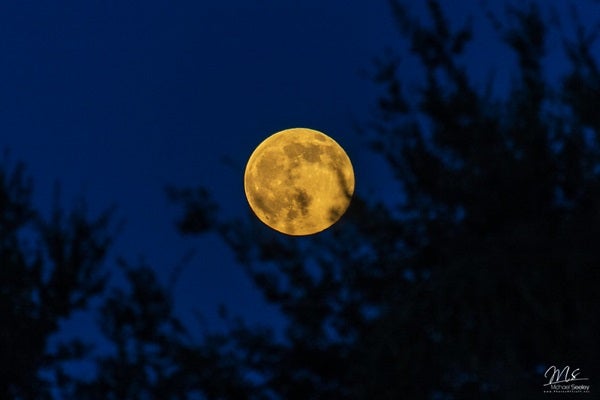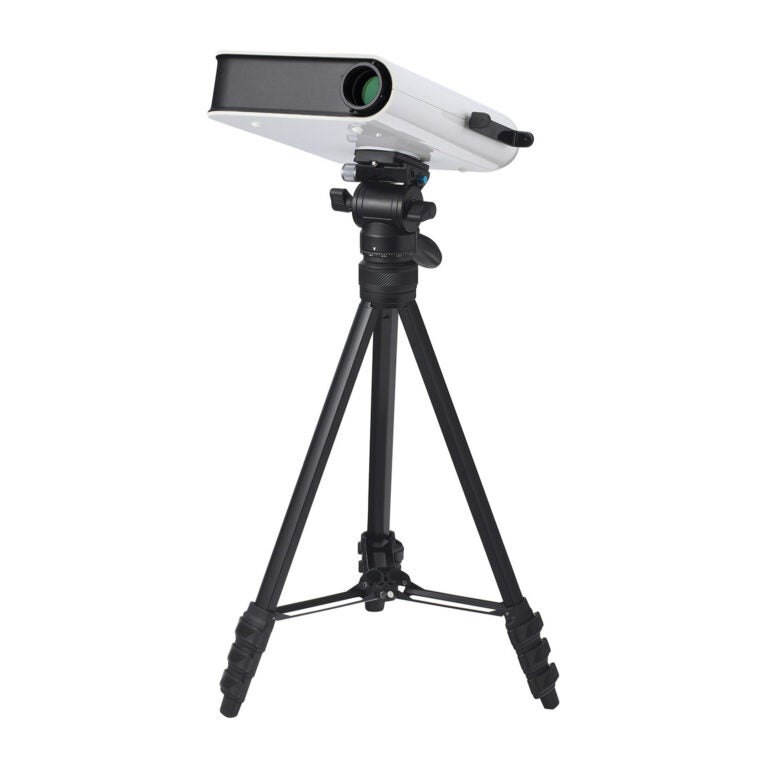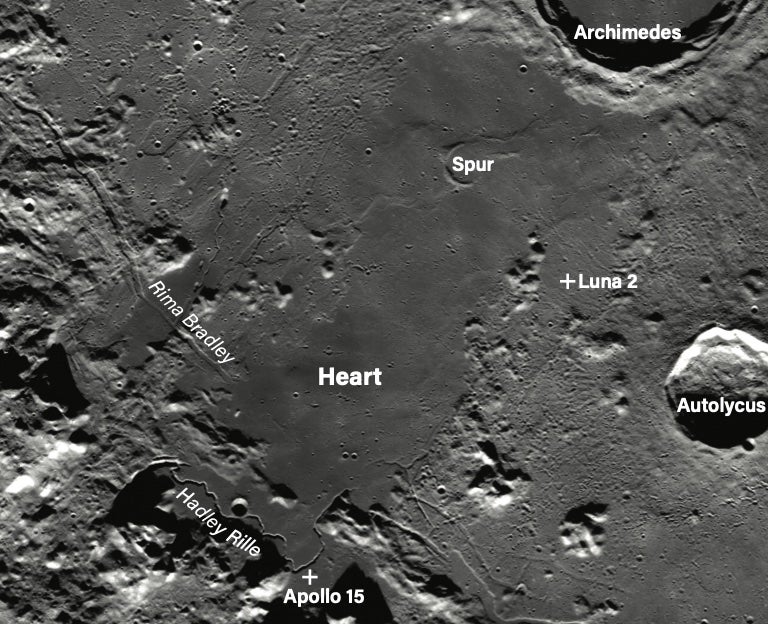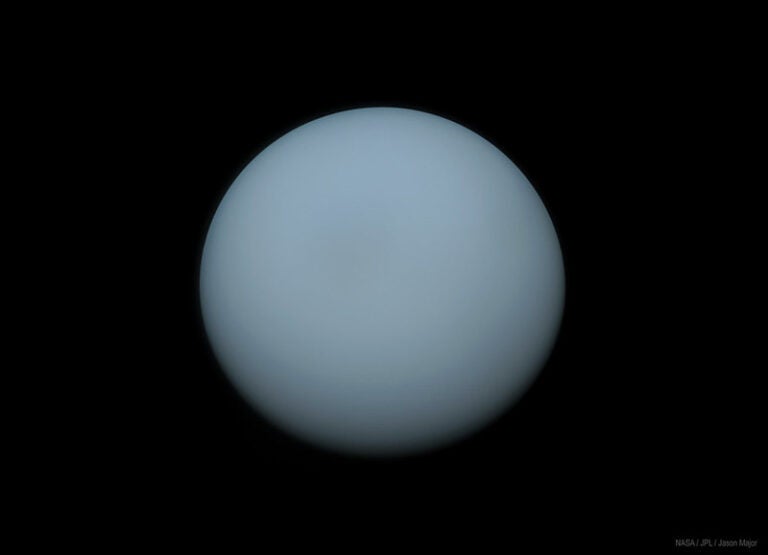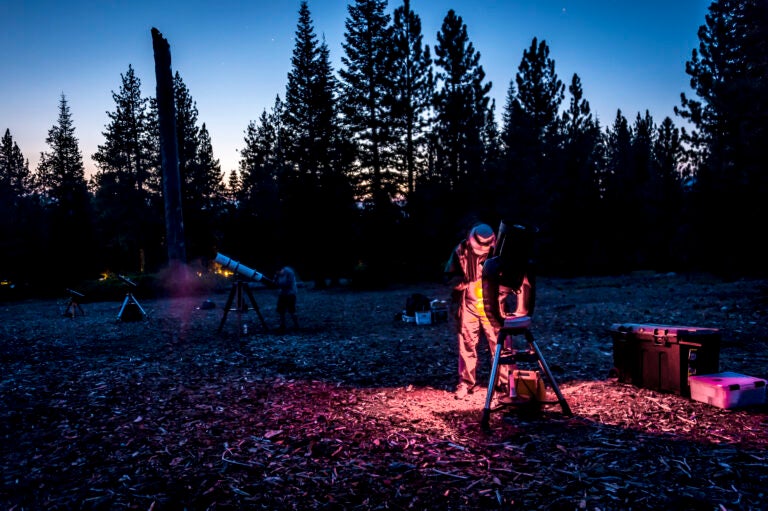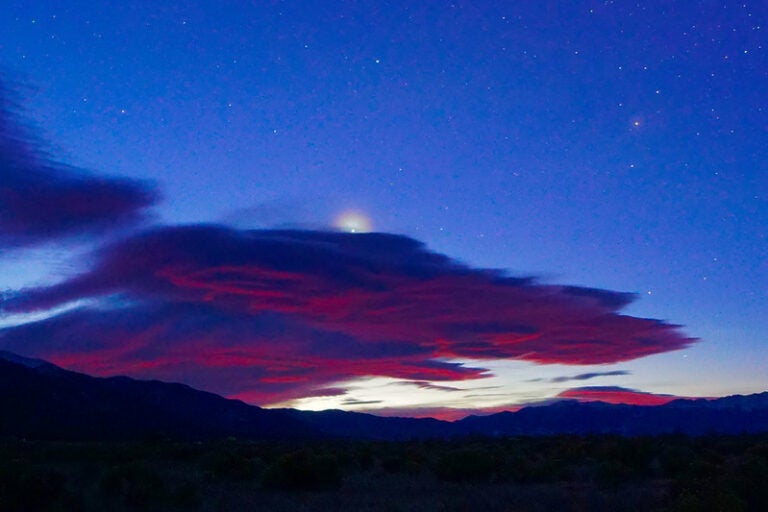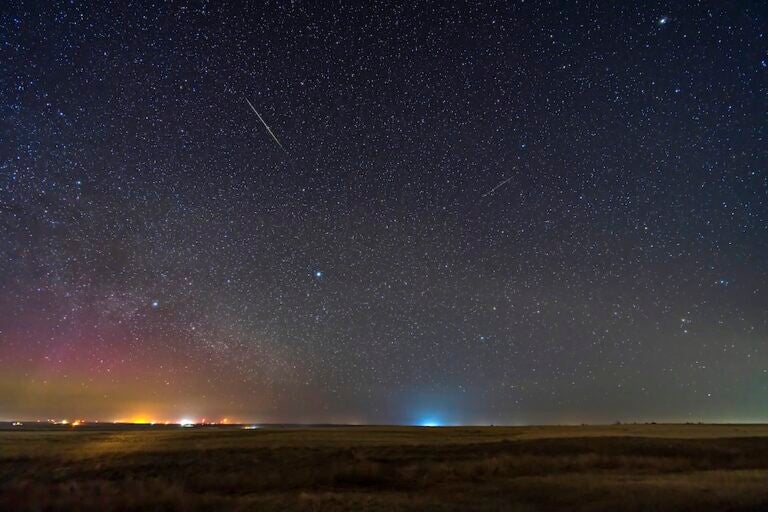This collection of images shows Saturn from 2005 to 2014. It takes a dedicated astro imager to follow a planet for this length of time. The photographer used a variety of equipment to capture the ringed planet through the years. (12-inch Meade LX200ACF Schmidt-Cassegrain scope; Flea3, DMK21, TouCam 740 and 840, and SAC7 CCD cameras; TeleVue 3x Barlow and 2.5x PowerMate)
The ringed planet stands about 20° above the southwestern horizon an hour after sunset and remains on view until nearly 10 p.m. local daylight time.
The ringed planet shines at magnitude 0.5, more than a full magnitude brighter than any of the background stars in its host constellation, Sagittarius.
If you own a telescope, there’s no better target than Saturn. Even the smallest instrument shows Saturn’s 16″-diameter disk surrounded by a dramatic ring system that spans 36″ and tilts 26° to our line of sight.

